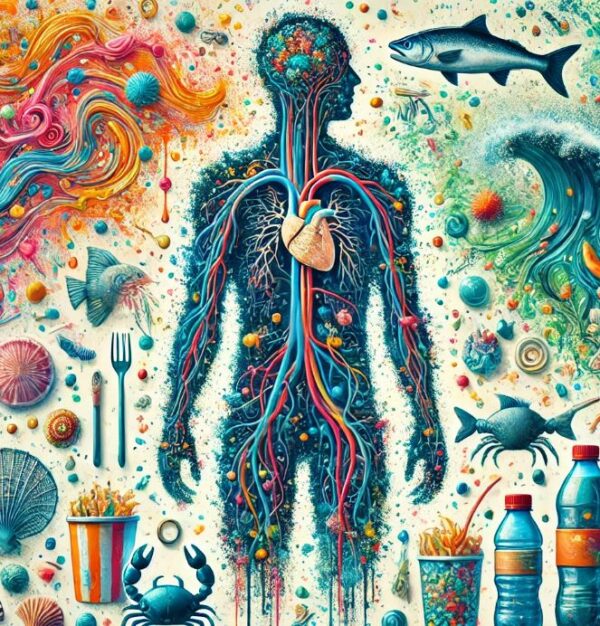The Invisible Threat: How Microplastics Harm the Human Body – By Nadeeka – eLanka

Microplastics, defined as plastic particles smaller than 5 millimeters in size, have become a pervasive environmental pollutant, infiltrating ecosystems across the globe. While much of the discourse surrounding microplastics has focused on their impact on marine environments and wildlife, their potential harm to the human body is an emerging area of concern that warrants significant attention. The omnipresence of microplastics in our environment raises questions about their effects on human health, especially as they find their way into our air, water, and food.
Microplastics enter the human body through multiple exposure pathways, including inhalation, ingestion, and dermal contact. Inhalation occurs as microplastics are present in the air we breathe, particularly in urban and industrialized areas where plastic waste is prevalent. Ingestion is a major route of exposure, as microplastics have been detected in drinking water, seafood, salt, and even fresh produce. The use of plastic in food packaging and processing further exacerbates the risk of microplastic contamination in food products. Dermal exposure, while less studied, may occur through contact with personal care products that contain microplastics or through exposure to microplastic-laden dust.
Once inside the human body, microplastics may accumulate in various organs and tissues. Studies have shown that microplastic particles are capable of crossing biological barriers, such as the intestinal wall, and entering the bloodstream. This raises the alarming possibility of microplastics traveling to other parts of the body, including the liver, kidneys, and brain. Research has already detected microplastics in human placentas, suggesting their potential to affect fetal development. The presence of microplastics in the body can trigger inflammatory responses as the immune system recognizes them as foreign particles. Chronic inflammation is a known precursor to a range of health issues, including cardiovascular disease, autoimmune disorders, and cancer.
Another area of concern is the chemical composition of microplastics. Plastics often contain additives such as phthalates, bisphenol A (BPA), and flame retardants, which can leach out over time. Many of these additives are known endocrine disruptors, capable of interfering with hormone regulation in the human body. Hormonal imbalances can have widespread effects, from developmental abnormalities to reproductive health issues. Furthermore, microplastics may act as carriers for environmental pollutants, such as heavy metals and persistent organic pollutants, which can adhere to their surfaces. When these pollutant-laden particles enter the body, they may release toxic substances, compounding the health risks associated with microplastic exposure.
The physical properties of microplastics themselves may also pose risks. Sharp-edged or irregularly shaped particles can cause mechanical damage to tissues, leading to microtears and inflammation. This is particularly concerning in the gastrointestinal tract, where prolonged exposure to microplastics could compromise gut integrity. Emerging research suggests that microplastics may disrupt the gut microbiome, an ecosystem of microorganisms that plays a crucial role in digestion, immunity, and overall health. Alterations to the gut microbiome have been linked to conditions such as obesity, diabetes, and depression.
Long-term exposure to microplastics could have cumulative effects, yet the full extent of their impact remains unknown. The persistence of microplastics in the environment and their resistance to degradation mean that their prevalence in human bodies is likely to increase over time. The health implications of chronic exposure are an urgent area for scientific investigation, as current studies are largely preliminary and often limited to small sample sizes or laboratory settings.
While the scientific community works to understand the health risks posed by microplastics, reducing exposure at an individual and societal level is critical. Limiting the use of single-use plastics, adopting sustainable alternatives, and improving waste management systems are essential steps to curb the spread of microplastics. At the individual level, making informed choices about food packaging, drinking water sources, and personal care products can reduce direct exposure.
The issue of microplastics is not merely an environmental problem but a public health challenge that underscores the interconnectedness of human health and the environment. As microplastics infiltrate every corner of the planet, their potential harm to the human body becomes an increasingly pressing concern. Addressing this issue requires a concerted effort from policymakers, researchers, industries, and individuals to mitigate exposure and prevent further contamination of our ecosystems. Only through a comprehensive approach can we safeguard human health in the face of this invisible but pervasive threat.






















